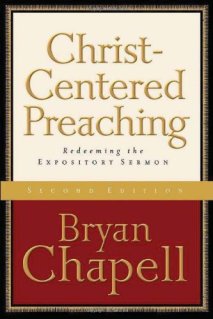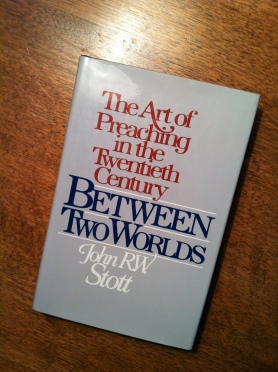 “Living the gospel?”…
“Living the gospel?”…
What does that even mean? We often hear it in Christian speech, in tag lines, prayed about, exhorted, etc. But is it even biblical? Is it even logical? I say, no. In fact, the evidence says, no.
*The “gospel” IS a message to be proclaimed NOT a life to be lived.
We proclaim the gospel…
We preach the gospel…
We hear the gospel…
We believe the gospel…
The gospel is “news” … even “good news.” But we would no more “live out the gospel” as we would live out the six o’clock evening news.
This has important implications.
When considering the biblical data in the NT, every verb used in conjunction with εὐαγγέλιον (euangelion – “good news”) is listed below; there are 43 occurrences. Only 1 time – 1 time – is the “gospel” even used with the verb, “to live” (which I will talk about below).
Even if you include a couple vague references which have to do with living – in conjunction with – the gospel, the evidence is overwhelmingly against its use.
40/43 (93%) times, “the gospel” is used in proper context of making known or receiving the message (proclaiming, preaching, hearing, believing, etc).
Only 3/43 (7%) of the time is the term used in relation to our lives.
This is so important. I will explain soon, but first review the biblical data for yourself:
—————————————
κηρυσσω (“preach”): This verb is used 12 times: Matthew 4:23, Matt. 9:35, Matt. 24:14, Matt. 26:13; Mark 1:14, Mark 13:10, Mark 14:9, Mark 16:15; 2 Cor 11:4; Gal 2:2; Col 1:23; 1 Thess 2:9.
πιστευω (“believe”): This verb is used 8 times: Mark 1:15; Acts 15:7; Romans 1:16, Romans 10:16; Gal 2:7; Eph 1:13; 1 Thess 2:4; 1 Tim 1:11.
ευαγγελιζω (“proclaim the good news”): This verb is used 5 times: 1 Cor 9:18, 1Cor 15:1, 2Cor 11:7, Gal 1:11, Rev 14:6.
ακουω (“hear”): This verb is used 3 times: Acts 15:7; Eph 1:13; Col 1:23.
‘υποκουω (“obey”): This verb is used 2 times: Romans 10:16; 2 Thess 1:8.
ερχομαι (“come”): This verb is used 1 time: Philippians 1:12.
λαλεω (“speak”): This verb is used 1 time: 1 Thess 2:2.
ορθοποδεω (“walk consistently”): This verb used 1 time: Galatians 2:14.
απειθεω (“disobey”): This verb used 1 time: 1 Peter 4:17.
μεταδιδωμι (“share”): This verb used 1 time: 1 Thess 2:8.
πολιτευομαι (“live”): This verb used 1 time: Philippians 1:27.
γινομαι (“became/came”): This verb used 1 time: 1 Thess 1:5.
παρειμι (“be present/come”): This verb used 1 time: Col 1:5b-6.
γνωριζω (“make known”): This verb used 1 time: Ephesians 6:19.
μεταστρεφω (“turn/distort”): This verb used 1 time: Galatians 1:7.
καλυπτω (“covered/veiled”): This verb used 1 time: 2 Cor 4:3.
τιθημι (“put/present”): This verb used 1 time: 1 Cor 9:18.
μαρτυρομαι (“testify”): This verb used 1 time: Acts 20:24
———————————————
So why am I on this high horse?
Because, though the gospel is the foundation by which we live, it is not the means of Christian living, itself. It’s a message. A life altering-message.
What do I mean by that?
First,
Understand what the gospel IS:
“The Gospel IS the life-altering news that Jesus Christ, the eternal Son of God, became man, lived a sinless life under the law, died for sinners, and rose again to reconcile them to himself, eternally victorious over every enemy that stood between God and man.”
This message being LIFE-ALTERING certainly affects the way we live (i.e., the things we do), but it does not prescribe the way we live.
The “way we live” and “the things we do” are done in relation to righteousness.
We either live for ourselves, which has been proved since the beginning of time to separate us from God because our living is “unrighteousness living” in relation to God’s standard (i.e., disobedience).
OR
We live in accordance with that which brings glory to the one who created us in his image (God, himself), the standard presented to us throughout the whole of scripture, “righteous living” (i.e., obedience).
Now immediately, if you are thinking, “that’s impossible.” You’re right! You and I fall waaay short of that standard! Who can keep the law?! Keeping the law is not the point.
THIS is the point. This is why the message of the gospel is SO important. Because the Son of God was able to live obediently, keep perfectly, fulfill righteously – the law, defeating death, and every sin that separates us from God….
We are NOW, as a result of believing THAT news, empowered to “live” in light of the truth of the gospel. Our eyes have been opened.
This is an important distinction.
We are not “living the gospel.”
We are “living in light of the truth of the gospel.”
The message, itself, is so important, so life-altering, that it produces within us a desire to obey. The gospel produces obedience!
Not perfect obedience, but desired obedience.
And those areas where we fall short, our disobedience, our unrighteousness living are brought again and again before the news of the gospel…causing us to repent and believe again and again! This is a necessary way of life for the Christian.
The Gospel REQUIRES repentance and faith.
The Gospel PRODUCES obedience.
Not a perfect obedience, but a desired obedience. We strive to please God by pursuing his righteous standard. His perfect law. And his law is summed up in loving God, and loving others.
Summed up – not condensed down to. The moral law is vast and beautiful and we ought to desire to honor it in our lives as King David did in Psalm 19. The law was precious to him. We still honor our mother and father, we still remain faithful to our spouse, we refrain from stealing, lying, and killing. We still love God first, we honor his name, we don’t make idols in place of God. We love God. We love others.
But please understand. We can only rightly love God, love others, by first believing the gospel.
By the power of the message of the gospel, we are able to love God and love others, rightly.
So “living the gospel,” no.
Living in light of the gospel, yes.
Live worthily of the gospel, yes.
Living as if the gospel is true, yes. Living out truth of the gospel, yes.
But first…
Proclaim the gospel…
Preach the gospel…
Hear the gospel…
Believe the gospel…
As a result…IT WILL CHANGE YOU.







![stott_1958622b[1]](https://remembermydeeds.files.wordpress.com/2015/02/stott_1958622b1.jpg?w=318&h=200)
